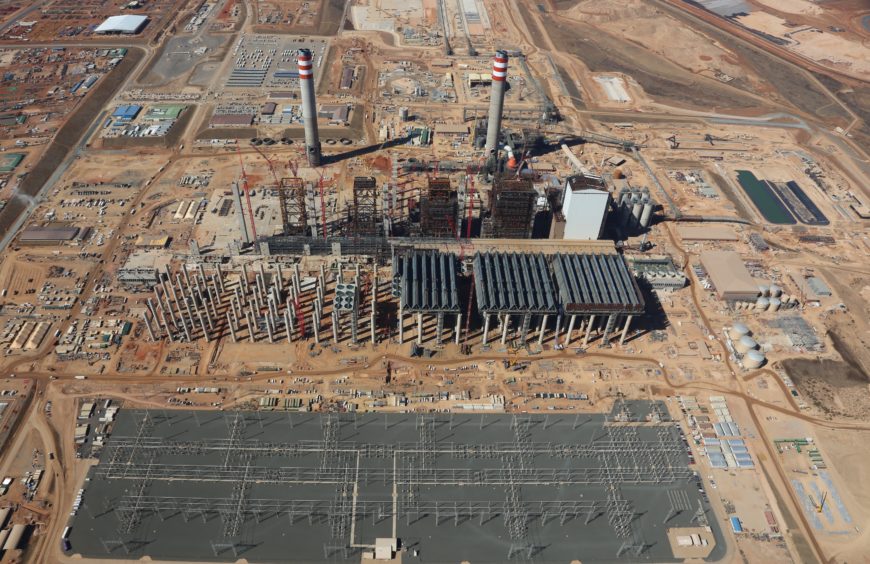
The next 10 years will be critical in determining Africa’s power path – and just how much more carbon the next billion people will emit.
“Africa has its own unique challenges markedly different to ours,” said Wentworth Resources’ CEO Katherine Roe. “We can’t deny the developing world access to low cost, reliable power that is needed to develop economies, drive education, health, improvements in livelihood. These are basic human necessities. Power needs to be low cost and the question, is can you do it in as low a carbon way as possible?”
Decisions about new power are being taken now and, whatever else may be going on, it is clear coal is on the back foot. “Coal is expensive to build and appetite from financiers has been seriously reduced. For the cost per kWh of construction, there are good alternatives available,” Emerging Africa Infrastructure Fund (EAIF) director Martijn Proos said.
EAIF has never worked on coal, Proos continued, and has moved away from investing in projects that burn petroleum products.
Much of South Africa’s power has historically come from coal, but times are changing. Denham Capital Management’s managing director Jasandra Nyker noted that the country would decommission 11 GW of coal-fired power by 2030.
New energies
“If the government acts quickly, it can replace this with renewables. Such a shift, I would imagine, will have to be driven by the private sector. There are challenges, and the next five to 10 years will likely still see coal play an important role,” she said.
Countries have taken steps on the energy security front, but corporates have moved faster. Nyker predicted this would strengthen in the near term.
“From an African perspective, the corporate renewable market will be more dominant in 2021, with a focus on self-production and reducing the risk around energy security,” she said.
Renewables are an increasingly attractive choice. Companies tend to prefer outsourcing power needs, creating space for new power developers to cover the gap. Crucially, renewables are cost competitive.
If countries want to catch up with this bandwagon, there are some straightforward steps to attract investment.
Nyker called for countries to hold auctions with pre-agreed power purchase agreements (PPAs). “If you have to negotiate each PPA separately it takes time and is more expensive. In the first rounds of South Africa’s REIPP for example, a ‘cookie-cutter’ PPA was used, and was effective,” Nyker said.
EAIF’s Proos held up Uganda’s GET FiT programme as a good example of how to go about securing investments. “The government, with KfW, worked to standardise documents, such as [PPAs] and concession agreements. We financed about six projects under this programme.”
Renewables alone are not yet sufficient to run a grid, though, Proos said. “Can you run a grid purely on renewables? Not yet, there’s a need for stable baseload power, so thermal power still often has a part to play.”
Gas plans
A combination of renewables and gas is an appealing proposition, said Tanzania-focused Wentworth’s Roe.
“The Tanzanian president has secured a second term and that creates stability, we know what the government wants: it intends to industrialise the economy in as low carbon a way as possible. Gas and hydropower are a pretty good mix for achieving that. The focus is to displace HFO and coal,” she said.
While there is room to run in terms of power generation, the essential role it can play for Tanzania – and others – is in industrialisation.
While coal is near impossible to finance, with only a small pool of potential backers, the tide may also be turning on gas, which has also been on the receiving end of carbon criticism.
Roe raised a concern around energy sector financing in London. Wentworth mitigates this through ties to shareholders and a clear perspective on social impact for communities in Tanzania. This comes in addition to providing returns, she continued.
“Natural gas helps improve people’s lives in the developing world. I believe there will be pressure on the traditional E&P sector to recognise changing investor sentiment and change the way in which they do business.”
EAIF takes a selective approach to gas power projects, Proos said. The fund will only finance such plants “if it meets certain strict criteria, in the poorest countries, with the most urgent infrastructure needs, and if they are part of a necessary and time-bound transition from more polluting sources towards renewables”, Proos said. “The direction of travel is towards 100% commitment to renewables.”
Battery business
Driving this change, Proos said, is energy storage. “Battery technology is improving and prices are coming down, slowly. Developing cost efficient energy storage solutions fed by renewable energy sources is a key element in broadening renewable power’s applicability.”
Batteries are still expensive, for now, but change is coming. The EAIF director compared the progression to that seen with wind power in the North Sea. First, this required subsidies but is now one of the cheapest options in the world. “Once you create scale in a market, costs generally tend to come down.”
Investor appetite for fossil fuels is clearly ebbing, at least for now, but batteries cannot yet make all the running to meet sub-Saharan Africa’s demand.
